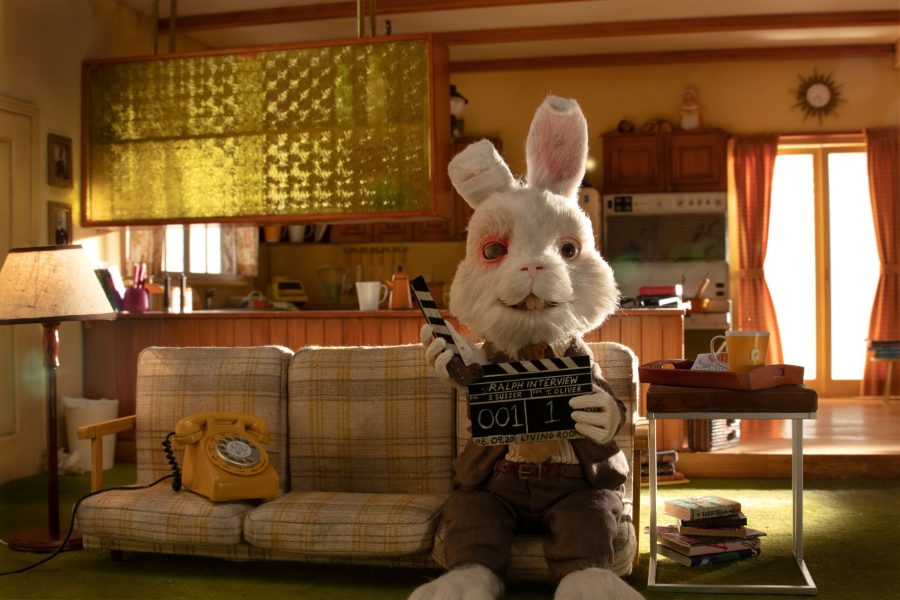Just recently, a short film by the name of “Save Ralph” went viral on many social media apps, including TikTok and Instagram. The film was created by Humane Society International; they also worked with a famous puppeteer and director by the name of Spencer Susser. The short film that was about four minutes long talked about and showcased animal testing in the cosmetics industry. The story highlighted a rabbit by the name of Ralph: a tester rabbit in a cosmetics lab. Ralph was trying to act as if he enjoyed his “job,” as it was benefitting the human race. In reality, his “co-workers,” as well as himself, truly showed the pain and torture that real animals go through during these testings. This short story showed the horrors of the cosmetics industry, and told the world one thing: cruelty-free products aren’t enough to solve the problem.
Many cosmetics brands try to convey that their products are cruelty-free, which is a huge step in stopping the unfair treatment of animals in the industry. But, this actually isn’t enough to virtually solve the problem altogether. There are many cosmetics brands that don’t care to take the steps towards a cruelty-free environment. Some of your favorite cosmetics and skincare brands try to convey that they need to test on animals in order to provide you with a safe experience. In reality, many chemicals that are routinely tested have been previously tested; they have probably been tested hundreds of times at this point. The cosmetics industry and the chemicals that have been introduced have already been well-established, so testing on more animals is simply not necessary.
There are also many chemicals that are tested on animals, but react differently on human skin. Almost every human has a different skin type, but they usually fall into these categories: dry, oily, sensitive, normal, or combination. Each of these skin types will react to a chemical differently. We also don’t have the same skin as a rabbit or a rat does, so results may vary upon application of a product. A rabbit may react poorly to a makeup-remover wipe, but a human may be just fine with it; it’s something that will always be an individual reaction, and will be virtually uncontrollable.
Though a brand may have the label of cruelty-free, this doesn’t mean that they aren’t 100% free of animal testing practices. Numerous countries, such as China, still allow for practically all animals to be tested on in their labs. This allows for many American brands that are sold in China to be tested on in China. Along with this, a brand may be able to call themselves cruelty-free, but still be able to use animal products within their formulas. For example, you’re given an eyeshadow palette that is cruelty-free, but it’s not vegan. This will mean that it’s not tested on animals, but there are ingredients in the formula that are from animals. At that point, is it fully cruelty-free?
There are also other industries that test on animals; these were not specifically highlighted in this short film. Different industries, including the medical industry, constantly test on many kinds of animals. Some examples include rabbits, mice, guinea pigs, etc. They used to test on household pets such as dogs and cats, but federal regulations caused the criminalization of testing on animals that qualified as pets. In medical practices, animals can be injected with certain diseases or cancers, given experimental drugs, or simply injected with harmful chemicals that may have previously been tested. The debate between testing in the medical industry is pretty controversial, as it is the battle between morality and solving the world’s worst diseases; but in the cosmetics industry, having an eyeshadow palette isn’t a matter of life or death.
The film “Save Ralph” brought to light the horrors of the cosmetics industry, as well as the denial that humans have about it. As stated by the Humane Society International, painful experiments have left Ralph blind in one eye and suffering from skin irritation and a constant buzzing in one ear, but he reassures the viewer that he’s just doing his job to ensure humans have safe shampoo. In reality, there are many ways that this can be avoided in the cosmetics industry. Though some cosmetics label’s proudly stand with their cruelty-free label, this simply isn’t enough to solve the overall problem.

